Over 100 teams of first year Mechanical Engineering students designed and built a type of frisbee machine. Which machine threw best at the finals?
At the yearly design competition first year student teams operate their machines in a day-long competition. (Photo: Thijs van Reeuwijk)
Anyone who has ever thrown a frisbee knows how unpredictable it can be. The speed, rotation, angle and the exact point of release determine where the disc lands. A reliable machine has less variation which makes it more precise. In terms of application, a throwing machine could throw a lifebelt right in front of a drowning person, or be used as a robot in a sorting facility.
In the last few months, 112 teams of between two and six first year Mechanical Engineering students (565 students in total) built their precision thrower. The assignment (in Dutch) was as follows: ‘The challenge is to design and manufacture a mechanical disc throwing device that can throw objects into various containers at a set horizontal distance (for the function of sorting objects).’
At the finals on 14 June, each team was given 15 minutes in which to shoot nine discs (24 cm diameter and 4 mm thick) into three containers. The jury checked that the disc separated from the thrower, the thrower was given the task of sorting for each container (yellow, blue, red), and the disc landed within one metre of the container. Teams that managed to get the disc into the container after flying around a pole were given extra points.
Regine Vroom, the Coordinator, noted the different kinds of solutions that the students came up with: a mechanically driven throwing arm; one or two electrically powered wheels that sped up the disc; a J or U shaped track which threw the disc after a 90 or 180 degree turn.
All the machines were in action last Wednesday. Group WB089 was declared the overall winner with 132 points. The other prizes were the Green Award won by group WB011, the 3D-CAD Award for WB029, the Constructor Award for WB076, and the Science Centre Award for WB005.
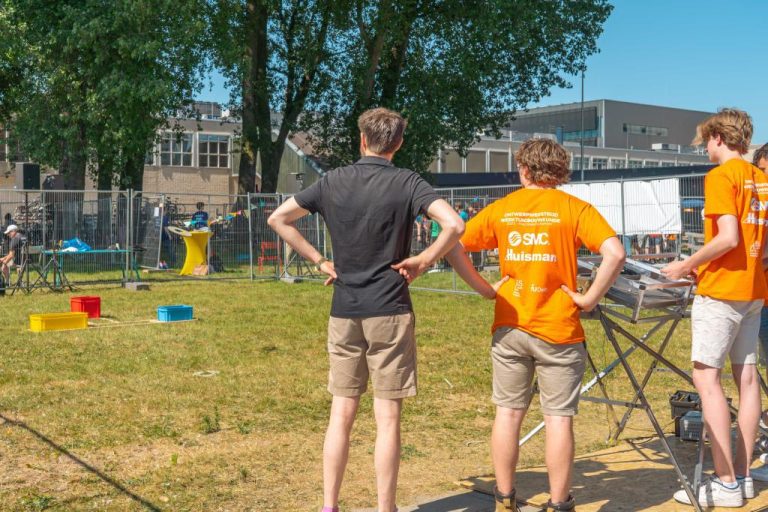 (Photos: Thijs van Reeuwijk)
(Photos: Thijs van Reeuwijk)
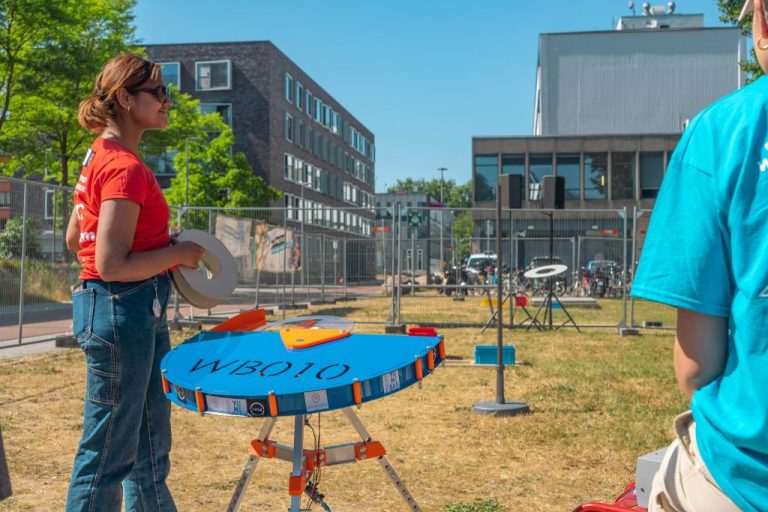
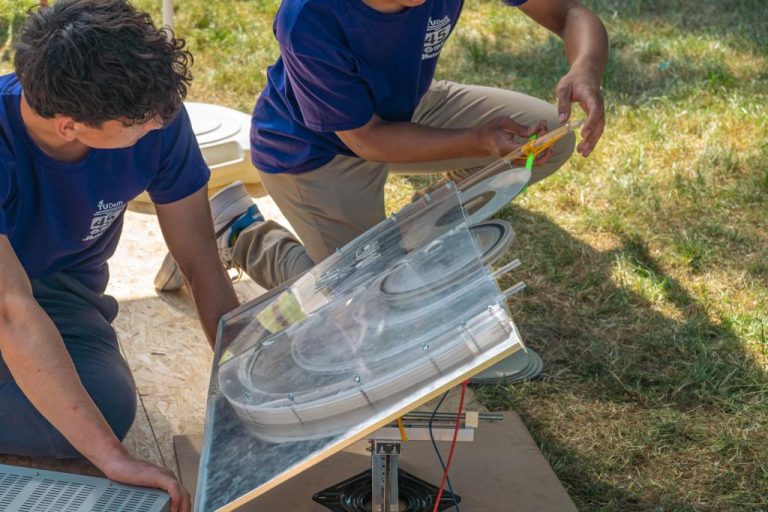
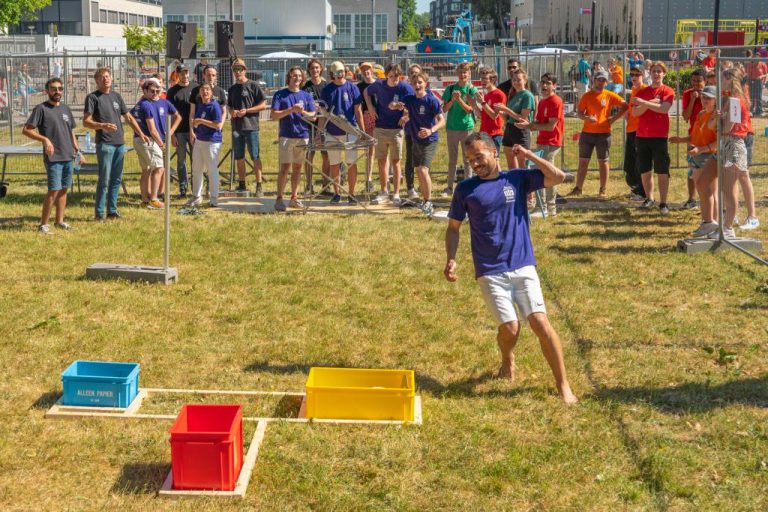
Do you have a question or comment about this article?
j.w.wassink@tudelft.nl

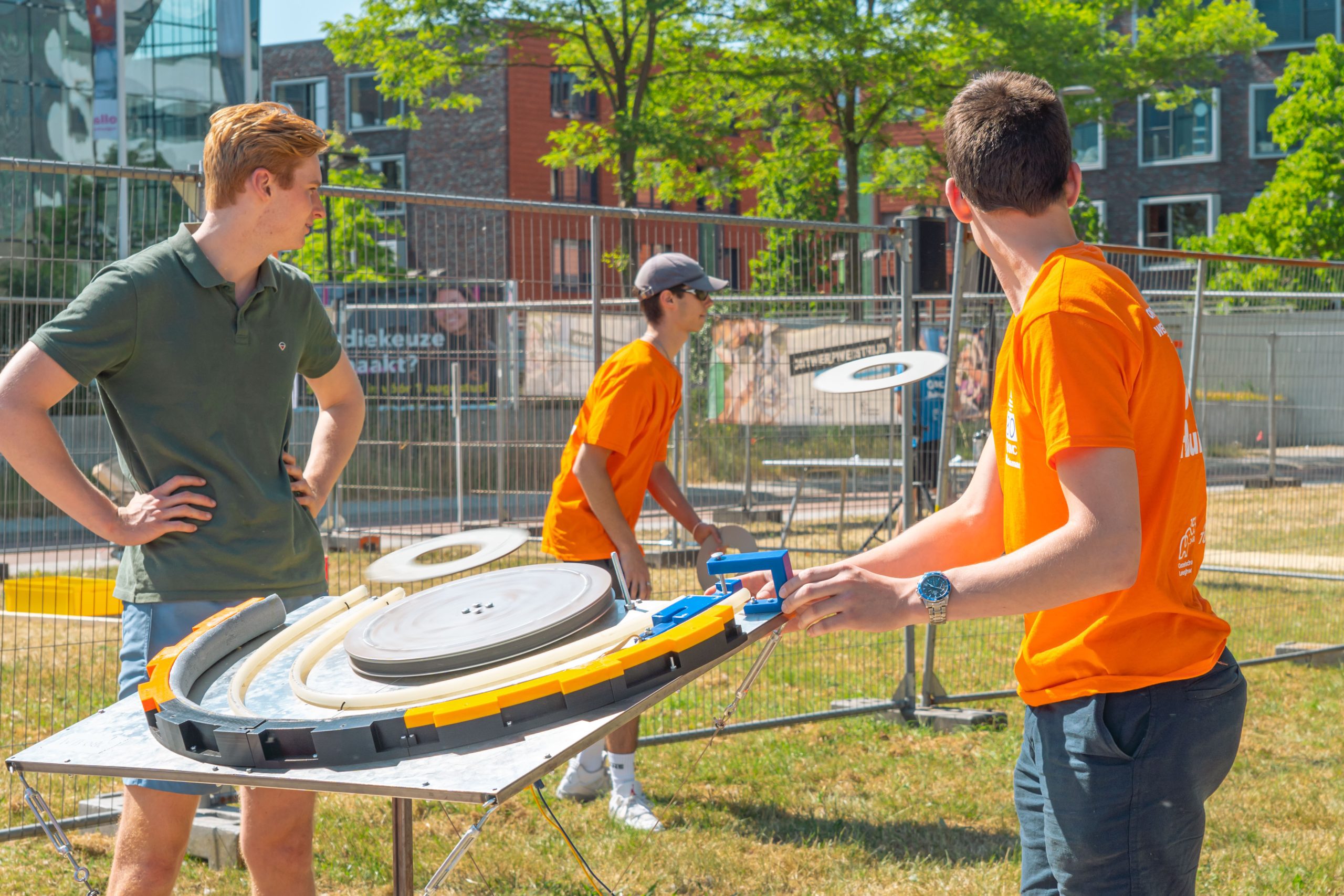
Comments are closed.